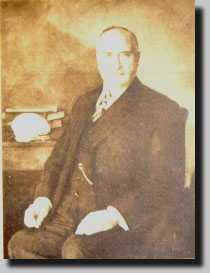Eugene
Dubois in his later years
 |
|
Excavation
at Trinil continued through the first decades of this century,
but no further supporting evidence came to light. In 1931, however,
the significance of Dubois' initial discoveries became known
when more skull fragments were found at Ngandong, which also
lay on the Solo River. Similar fossils were uncovered at nearby
Sangiran In 1936 the remains of a man-like creature were found
at Mojokerto and proved to be the earliest yet discovered; the
estimated age was an incredible 1.9 million years. 'Java Man'
could no longer be ignored.
Despite its historical significance Trinil had nothing to offer
interested visitors until the nineteen sixties. when a local
farmer named Wirodiharjo built a small house near the original
excavation site and began to build up a small collection of fossils,
which have continued to be discovered annually by villagers who
come to bathe in the river. Wirodiharjo's efforts were rewarded
in 1980 when his collection came to the attention of the government
and a small museum was built, Wirodiharjo himself becoming honorary
keeper.
Now, in 1991, exactly one hundred years since Eugene Dubois unearthed
the fossil skull of Pithecanthropus. a new museum has
been constructed. On view are numerous fossilized animal remains,
the prize exhibits being a three metre long mammoth's tusk and
an enormous pair of prehistoric buffalo horns. The museum also
preserves some of Eugene Dubois' original documents and photographs,
as well as exact replicas of the original skull, molar and femur
of Pithecanthropus Erectus. |

